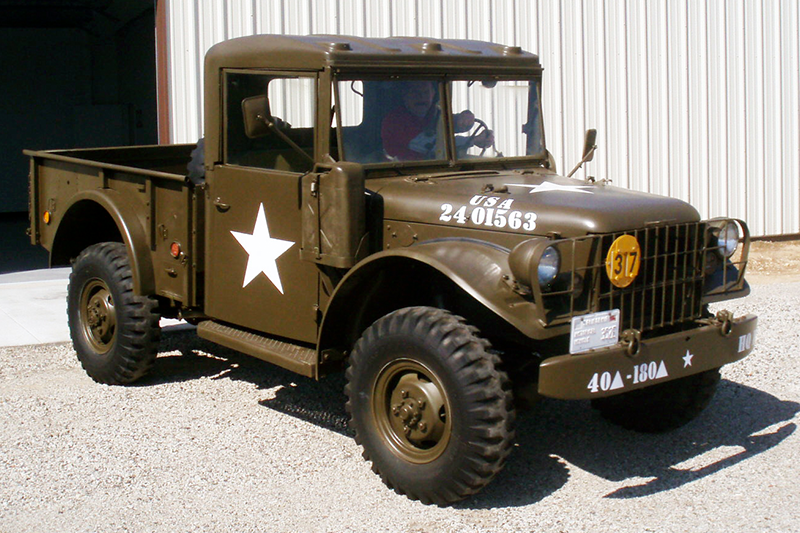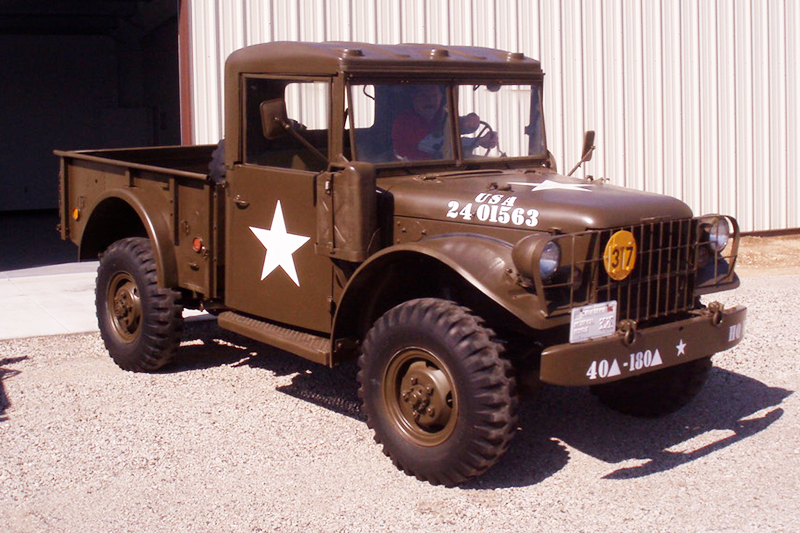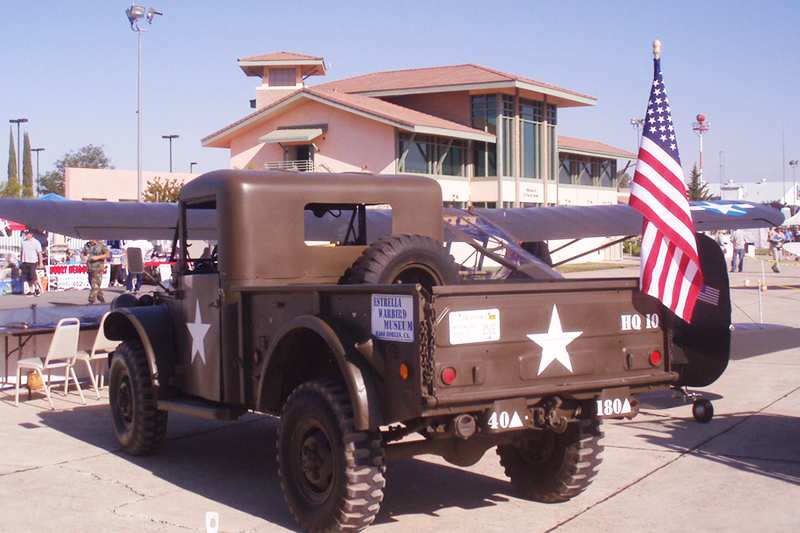Specifications
| VIN: | 2401563 | |
|---|---|---|
| License No.: | HV352E | |
| Engine: | 251 Cubic Inch Flathead 6-Cylinder | |
| Transfer Case: | 2-Speed | |
| Horsepower: | 94 | |
| Fuel Capacity: | 24 Gallons; 5-8 MPG | |
| Winch Capacity: | 7,500 lbs | |
| Max. Speed: | 54 MPH, 3200 RPM | |
| Max. Range: | N/A | |
| Brakes: | Manual | |
| Weight: | 7,800 lbs | |
| No. Produced: | 110,000 | |
| Status | Working Display | |
| Owner: | Estrella Warbird Museum | |
History
The Dodge M-37 was probably one of the most successful military vehicles in US history other than the Jeep. The M-37 was designed immediately after WWII to compensate for some of the short comings that had been revealed in the Dodge 3/4 ton WC series of trucks during the war. The M-37 retained the WC-series 230 cubic inch flat head six-cylinder engine and 4-speed non-syncromesh transmission.
Although the WC series of trucks is similar in many respects to the M-37 series, there were a number of modifications to the basic WC design to make the M-37, among them:
- - New Process synchronized transmission
- - New Process 200 2-speed transfer case
- - The M-37 had a 3/4 ton capacity vs the 1/2 ton WC series
- - The chassis was lengthened, and a the cab was separated from the bed.
The M-37 was in standard service with the US Military from it's introduction in 1952 until the late 1970's, and was used extensively in the Korean Conflict. By mid-1951, 11,000 vehicles had been produced, and by mid-1954, some 58,000 rolled off the assembly line. In 1958, a number of modifications to the design resulted in the new vehicles being designated M-37B1. From mid-1958 until the end of production, 47,000 M-37B1 vehicles were produced. Approximately 4,5,000 Canadian M-37CDN's were produced between 1951 and 1955. In total, between 1951 and 1968, 110,000 M-37s were produced. Spare parts for these vehicles were widely available and inexpensive to procure. Many deficiencies became apparent in the 1960s, including a tendency of the connecting rods to fail at high RPM's due to the long cylinder stroke of the engine. As the average speed of the vehicles in the military increased, these engine failures became common place due to the low gear ratio of the vehicle which was originally designed as a multi-purpose vehicle capable of transporting heavy loads of ammunition.
In the late 1960's, the Kaiser Jeep M-715, a very rugged looking truck that was well known for being under powered, replaced the M-37. As a result of the less-than-satisfactory reputation of the M-715, many M-37's stayed in service long past their phase-out date in the late 1960's, particularly with Reserve and National Guard units. Although the M-37 is also under powered at 90 hp, it is one of the toughest and most reliable trucks ever built for the military










